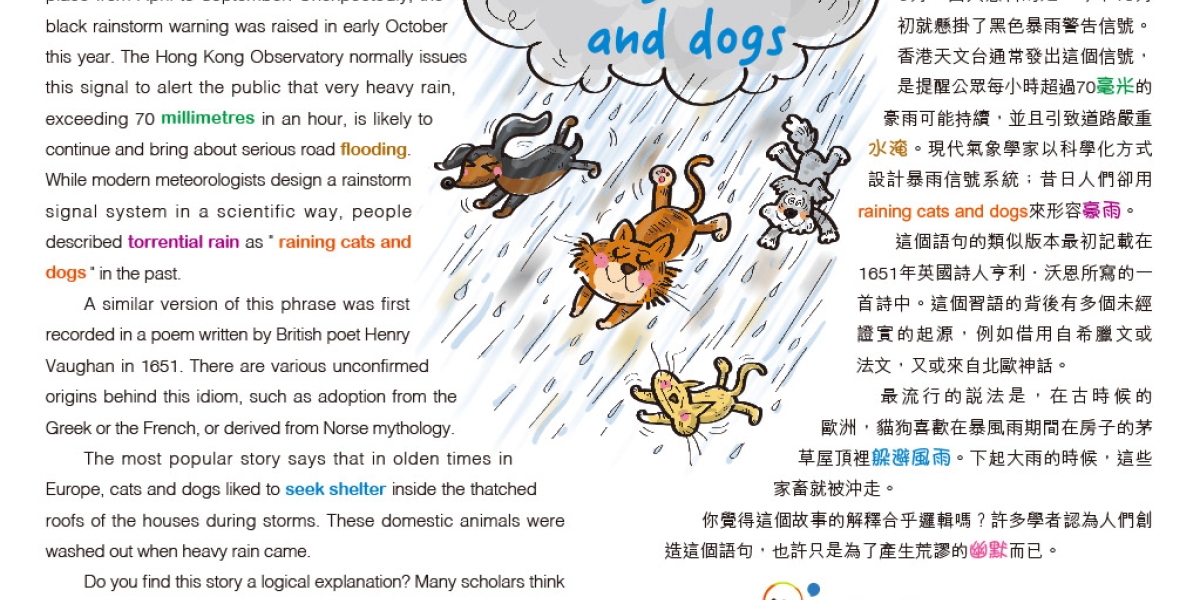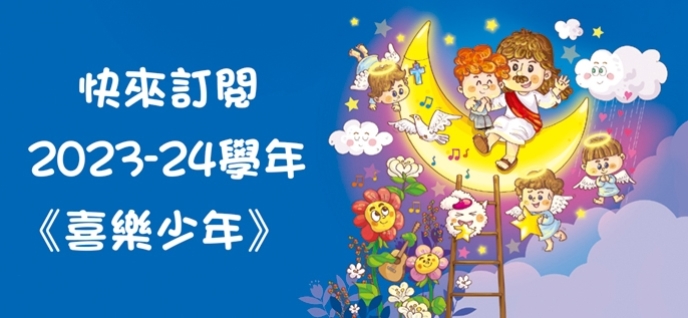
Raining cats and dogs
The rainy season in Hong Kong typically takes place from April to September. Unexpectedly, the black rainstorm warning was raised in early October this year. The Hong Kong Observatory normally issues this signal to alert the public that very heavy rain, exceeding 70 millimetres in an hour, is likely to continue and bring about serious road flooding. While modern meteorologists design a rainstorm signal system in a scientific way, people described torrential rain as " raining cats and dogs " in the past.
A similar version of this phrase was first recorded in a poem written by British poet Henry Vaughan in 1651. There are various unconfirmed origins behind this idiom, such as adoption from the Greek or the French, or derived from Norse mythology.
The most popular story says that in olden times in Europe, cats and dogs liked to seek shelter inside the thatched roofs of the houses during storms. These domestic animals were washed out when heavy rain came.
Do you find this story a logical explanation? Many scholars think that this expression may have been created to bring nonsensical humour only.
香港的雨季一般是從4月到9月。出人意料的是,今年10月初就懸掛了黑色暴雨警告信號。香港天文台通常發出這個信號, 是提醒公眾每小時超過70毫米的豪雨可能持續,並且引致道路嚴重水淹。現代氣象學家以科學化方式設計暴雨信號系統;昔日人們卻用raining cats and dogs來形容豪雨。
這個語句的類似版本最初記載在1651年英國詩人亨利.沃恩所寫的一首詩中。這個習語的背後有多個未經證實的起源,例如借用自希臘文或法文,又或來自北歐神話。
最流行的說法是, 在古時候的歐洲,貓狗喜歡在暴風雨期間在房子的茅草屋頂裡躲避風雨。下起大雨的時候,這些家畜就被沖走。
你覺得這個故事的解釋合乎邏輯嗎?許多學者認為人們創造這個語句,也許只是為了產生荒謬的幽默而已。

捐款支持公教報 http://kkp.org.hk/donation






